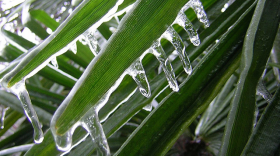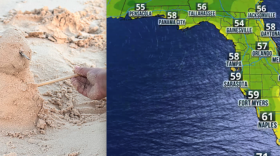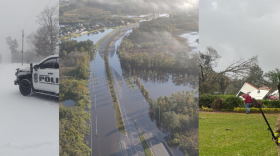Sarasota has a rich legacy when it comes to African American history. The actions and accomplishments of black activists during the Civil Rights Movement of the 1960s are listed on the U.S. Civil Rights Trail right along with important historical destinations like Selma and Birmingham.
In 2015, the City of Sarasota funded the Newtown Conservation Historic District project now known as “Newtown Alive.” A team documented the African American community’s history in two phases, a research report and multi-media products.
On Monday, stakeholders will make a pitch for a permanent cultural center and history museum before Sarasota City Commissioners.
WUSF's Cathy Carter spoke with Vickie Oldham, president of the Sarasota African American Cultural Coalition about the proposed facility.
Vickie, can you give us a preview of what you and your colleagues will be presenting to Sarasota City Commissioners on Monday?

We will be describing the sites that we looked at for the establishment of this facility, and we vetted about 20. But we've come up with one site that fits the bill. It's located in the community so that it's accessible to the people who live in the community. And so, on Monday night, we will be asking for permission to go ahead and develop that African American Art Center and History Museum on city land, that's an extension of the Leonard Reid house.
The Leonard Reid house, and a permanent facility would be located in Newtown, a very historic black neighborhood in Sarasota. You grew up in Newtown, can you just share with us one story about some of the history that unfolded while you were growing up?
Gosh, you're talking about some fierce civil rights pioneers, who were in our community. They asserted their rights. I'm remembering our big story and that is about beach integration, and how it all came about. You know, one little lady by the name of Mary Emma Jones marched up to the county commission and asked for a colored beach. That was the term at the time, and Sarasota County Commissioners blew her off. The next year, Neil Humphrey, the first NAACP president, he organized a wade-in. And after church on Sunday afternoons, people would pile into cars and make a ride out to the beach, Lido, in a car caravan. They would go out there and wade in the water, and then drive back to their community. They faced jeers and shouting and so forth. But they kept going, and they never stopped. That is a big story for me. And that is what does my heart so good. And so, I'm wanting to tell that story in that African American Art Center and History Museum and tourists will be coming through as well and they'll understand why these beaches are open to everyone as a result of African American pioneers in the Newtown community.

Well, can you talk about the significance of the effort to bring this center to the community at this point in history?
The timing could not be better. And to think that we started this project in 2015, and developed all of these resources. And then now, the interest level is through the roof. You can't turn the TV on, or listen to radio shows, without hearing stories about what's going on in our country. But you know what, we'll have a place for lectures where we can discuss some of the difficult topics that America is having today, around this racial reckoning that we're experiencing. We need to get together and talk to one another.
So, it sounds like the vision is for this is to be a real community center and more than just a museum.
Absolutely. And you hit it right on the nail. We want our residents to get a better understanding about how African Americans built the infrastructure of Sarasota. They built the roads, the bridges, the rail roads and everyone needs to know that, not just residents, but our tourists who visit. And so, I'm so glad that Sarasota began its work early on, and so we're ready now. It's time for this facility.
Copyright 2021 WUSF Public Media - WUSF 89.7. To see more, visit WUSF Public Media - WUSF 89.7. 9(MDAyMTYyMTU5MDEyOTc4NzE4ODNmYWEwYQ004))








